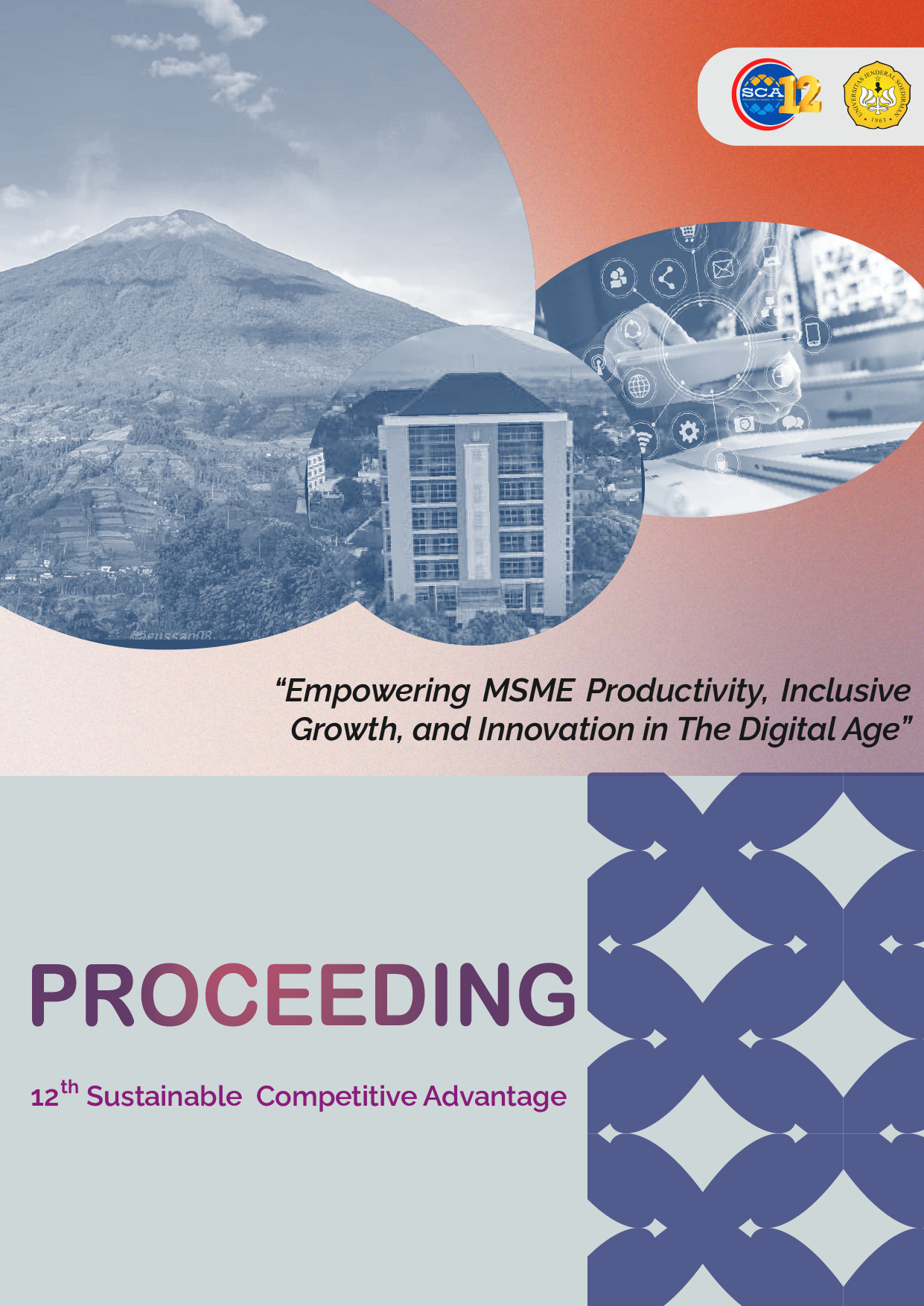The Mediation Role of Brand Trust On The Effect of brand Image On Student Decisions To Study At The Universitas Peradaban
Abstract
The purpose of this study is to analyze the effect of brand trust, and brand image on student decisions. To analyze the effect of brand image on student decisions to study at the Universitas Peradaban mediated by brand trust. The subjects to be studied in this study are students of the Universitas Peradaban Bumiayu in 2021. The sampling technique in this study was carried out using a probability sampling technique, namely proportionate stratified random sampling with a sample of 96 people. The analytical tools used are multiple regression analysis and the Sobel test.
The results showed that brand trust and brand image had a positive and significant influence on student decisions. Brand trust can mediate the influence of brand image on students studying at the Universitas Peradaban. This means that students' decisions to study at the Universitas Peradaban can be improved indirectly through brand trust
Keywords:Brand Trust; Brand Image; Student Decision; Bumiayu; University.
References
Aisah, IinNur&Wahyono. (2018). The Influence Of Store Atmosphere, Product Knowledge And Brand image Toward Purchase Decision Through Word Of Mouth. Management Department, Faculty of Economics, UniversitasNegeri Semarang, Semarang, Indonesia
Angga Pandu Wijaya1 ,Intan Tri Annisa. (2020). The Influence of Brand image, Brand trust and Product Packaging Information on Purchasing Decisions. JurnalAnalisisBisnisEkonomi. Vol. 18 No. 1 (2020) pp. 24-35
Brakus, J.J., Schmitt, B.H &Zarantonello, L. (2009). Brand Experience : What is it? How is it Meassured? Does it Affect Loyalty?. Journal of Marketing, Vol.73, No.2
Bian, X., &Moutinho, L. (2011). The role of brand image, product involvement, and knowledge in explaining consumer purchase behaviour ofcounterfeits: Direct and indirect effects. European Journal of Marketing, 45(1),191–216.
Delgado., et al, (2003). Development and Validation of a Brand TrusScale, International ,Journal of Market Research,vol 45, No1,PP 35-34.
Dumortier, Evans, Grebitus, & Martin, (2017). The Influence of Trust and Attitudes on the Purchase Frequency of Organic Produce. Journal of International Food & Agribusiness Marketing. Volume 29, 2017 - Issue 1
Dwyer, F. R., Schurr, P.H. & Oh, S. (1987). Developing buyer-seller relationship", Journal of Marketing, Vol.51, No.2, pp.11-27
Gurves, &Kocia. (2003).PeranKepercayaanPadaMerek. ManajemenUsahawan Indonesia. Edisi1/XXXVII
Hanzaee, K., &Ghafelehbashi, S. (2012). The Role of Product Involvement, Knowledge, and Perceptions in Consumer Purchase Behavior ofCounterfeits: Perspective Islamic Country. Journal of Basic and Applied 2(1), 418–425.
Helen Inseng Duh. (2020). Generic medicine brand knowledge structure,relationships and purchase.International Journal of Pharmaceutical and Healthcare Marketing Vol.14 No. 4.
Ibnu Auf Ubaidi, RemintaLumbanBatu. (2020).PengaruhProduct Involvement Dan Product Knowledge TerhadapKeputusanPembelianMahasiswa Honda Mobilio. Jurnal MEBIS (ManajemendanBisnis) - Vol. 5, No. 2
Kotler, Amstrong. (2016). Principles of Marketing. Sixteenth Edition GlobalEdition. England. Pearson Education Limited
PeterJ. Paul. dan Jerry C. Olson (2014). Perilakumahasiswadanstrategipemasaran. Edisi. Sembilan. Buku2.penerbitsalembaempat. Jakarta
Song, Wang, & Han (2019). Effect of image, satisfaction, trust, love, and respect on loyalty formation for name-brand coffee shops. International Journal of Hospitality Management . Volume 79, May 2019, Pages 50-59
Sugiyono. (2018). MetodePenelitianKuantitatif, Kualitatif, danR&D. Bandung: Alfabeta
Suliyanto (2018).MetodePenelitianBisnisuntukSkripsi, Tesis, &Disertasi. Yogyakarta: Andi Offset.
Tamboto, F. C., Pangemanan, S. S., & Program, M. (2019). the Influence of Product Knowledge and Product Involvement Toward Purchase Decision of Nissan Cars Customers. Jurnal EMBA: JurnalRisetEkonomi,Manajemen, Bisnis Dan Akuntansi, 7(1), 861–870

